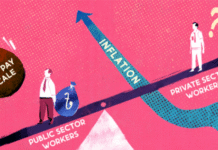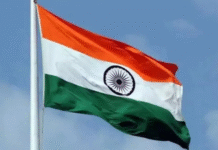SAFE MOTHERHOOD DAY
Safe motherhood is a right, not a privilege

What I learned from this is that there is something seriously wrong with our society’s perception of safe motherhood which needs to be changed. Because “safe motherhood” is not an opportunity; it is a right of every woman. And Bangladesh has a long way to go when it comes to providing quality maternal care and reducing maternal deaths.
Although maternal deaths declined significantly between 2001 and 2010—from 322 to 194 deaths per 100,000 live births—this rate has not changed between 2011 and 2016. In 2016, maternal mortality rate was 196 per 100,000 live births, almost the same as the rate of 2010. This is the finding of a survey done by the National Institute of Population Research and Training (NIPORT) last year. Bangladesh has to make extraordinary efforts to reduce maternal deaths to 70 per 100,000 live births by 2030, which is an SDG goal.
However, Bangladesh has made significant improvements in many fields of maternal healthcare. According to the Bangladesh Maternal Mortality and Healthcare Survey (BMMS 2016), the percentage of births in health facilities increased from 23 percent in 2010 to 47 percent in 2016. Seeking treatment in healthcare centres for pregnancy-related complications has increased from 29 percent in 2010 to 46 percent in 2016. Also, in 2016, 50 percent births were attended by medically trained personnel, compared to 27 percent in 2010. Despite all this progress, maternal deaths have not reduced in these last years.
BMMS 2016 found that although delivery at healthcare facilities is important to lower maternal mortality rate, this is not enough. For maternal deaths to reduce, quality of healthcare needs to be improved, meaning that our healthcare centres need to be fully staffed and equipped with competent health workers to provide emergency maternal care. Although healthcare centres have increased across the country over the years, these centres lack skilled health workers to provide emergency healthcare to pregnant women. And not only emergency care, these facilities are not even capable of providing treatment for two of the most common reasons of maternal death: haemorrhage and eclampsia. At present, haemorrhage and eclampsia account for 55 percent of maternal deaths. Although cheap, simple medicines can prevent deaths from these two causes, the risk of dying from these causes remained unchanged between 2010 and 2016.
While talking about providing quality healthcare to expectant mothers, the need for skilled birth attendants or midwives should be given priority. A majority of maternal deaths can be prevented simply by having a professionally educated midwife attending women at childbirth. In Bangladesh, only 42 percent of deliveries are attended by skilled birth attendants. And medically trained attendance for home deliveries has consistently been around three to four percent during 2001-2016.
Besides providing quality healthcare, there are other issues that need to be addressed if we are really serious about ensuring safe motherhood for every woman. One such issue is child marriage. Maternal deaths cannot be reduced if early marriage is not stopped. Adolescent mothers are more likely to suffer from childbirth-related complications than adult mothers. According to UNICEF’s State of the World’s Children 2015 report, in Bangladesh, 65 percent of girls are married before they reach the age of 18. As a result, both maternal and child mortality rates are increasing in the country. Also teenage mothers are more likely to go into premature labour, which can be deadly in many cases. Amid such a situation, child marriage was “legalised” in the country through a special provision in the Child Marriage Restraint Act 2017. In order to stop child marriage, this special provision must be eliminated.
Another important issue which is often ignored is family planning and the use of contraceptives. Although our family planning programmes saw huge success in the past decades, at present we do not see much effort on the part of the government regarding providing family planning services in the remote rural areas. According to a study, use of contraceptives and quality family planning services can prevent more than 32 percent of maternal deaths. So the government’s family planning programmes need to be strengthened. Also, the role of men in family planning programmes need to be determined.
When the BMMS survey report was made public last year, our health ministry outright rejected its findings which said maternal deaths had not reduced between 2010 and 2016. But if the government is really sincere about ensuring safe motherhood, it needs to shift from this denial mode and make real efforts to ensure that all expectant mothers get quality maternal care from skilled birth attendants or midwives, which is the theme of this year’s Safe Motherhood Day.
Naznin Tithi is a member of the editorial team at The Daily Star.
Source: The Daily Star.









